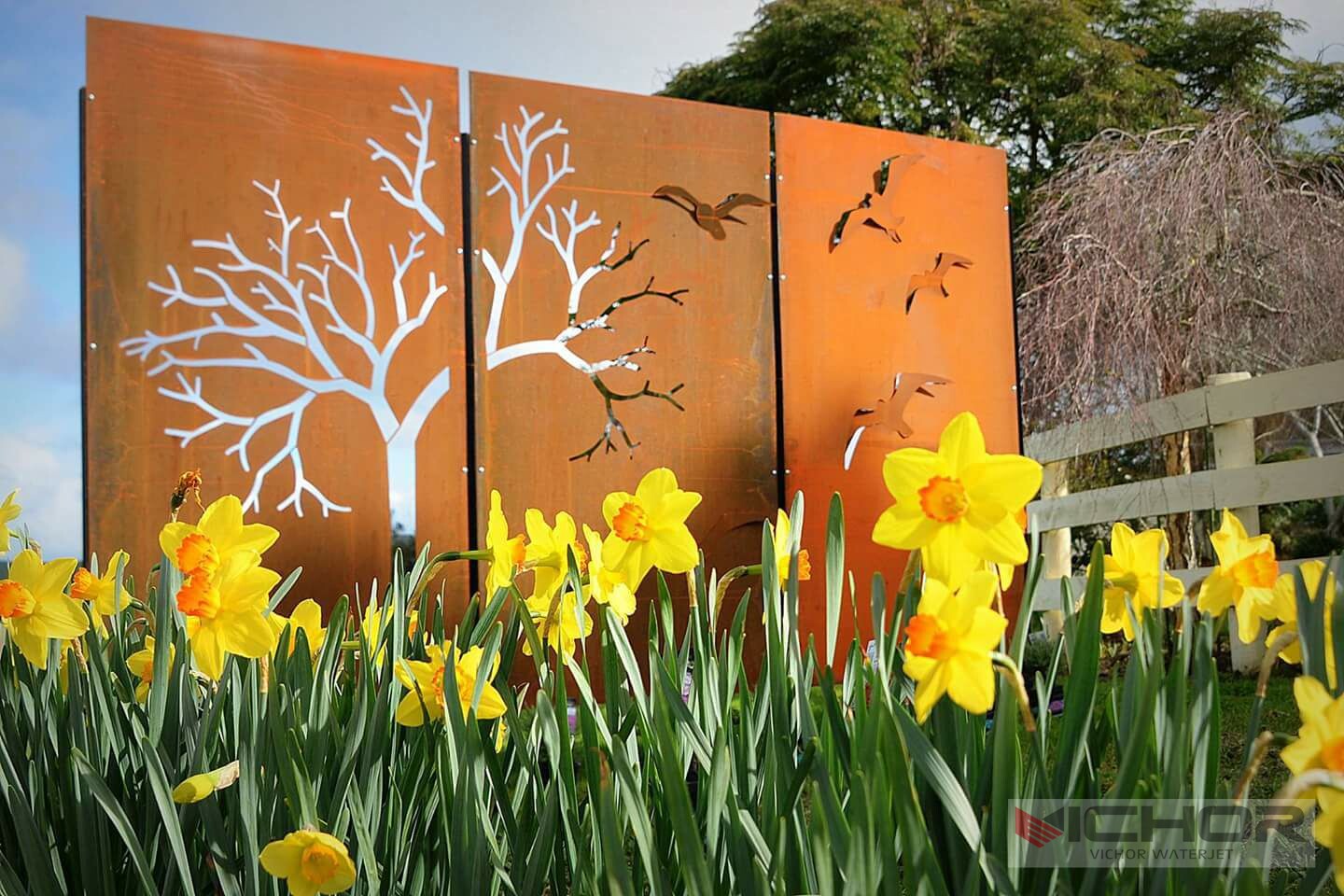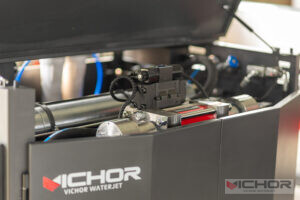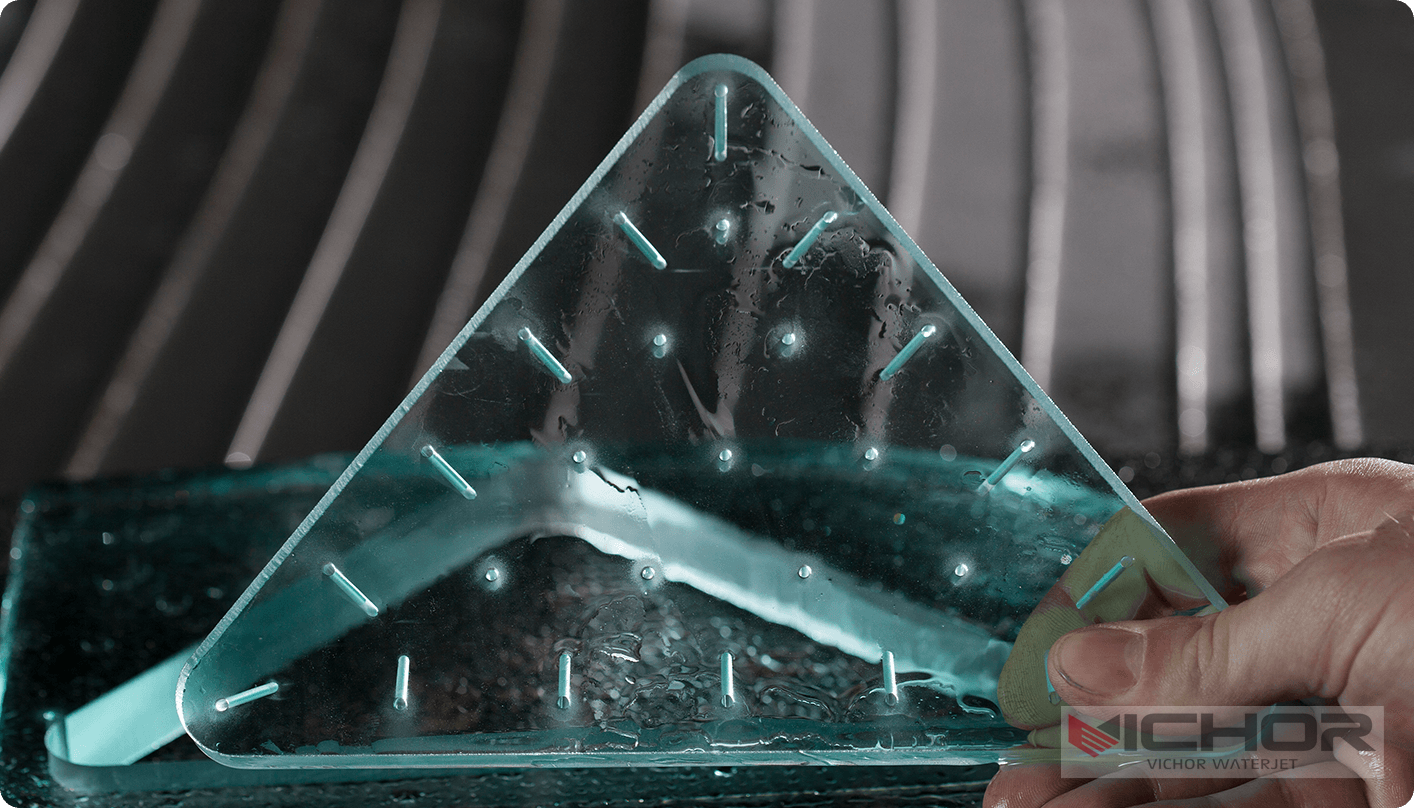
Waterjet Wood Cutting: Precision, Beauty and the Power of Water
The world of woodworking is a beautiful blend of ancient tradition and cutting-edge innovation. While the charm of hand tools and the roar of table saws will always have their place, a quieter, more versatile technology has been steadily reshaping what’s possible with wood: waterjet wood cutting. This process, which harnesses the immense power of a hyper-pressurized stream of water mixed with abrasive garnet, offers a level of precision and flexibility that traditional methods struggle to match. Whether you’re a master craftsman, an architectural woodworker, or an artist pushing the boundaries of design, understanding waterjet wood cutting is key to unlocking new creative potential. In this comprehensive exploration, we’ll delve into how it works, its numerous advantages, its diverse applications, and address the common questions surrounding this fascinating technology, including how brands like VICHOR are enhancing its capabilities.
What is Waterjet Wood Cutting and How Does It Work?
At its core, waterjet wood cutting is a cold-cutting process that uses a supersonic stream of water, often combined with a hard abrasive material, to erode and slice through wood with incredible accuracy. The science behind it is both simple and brilliant.
The process begins with a standard municipal water supply. This water is first purified and then pressurized by an ultra-high-pressure pump to levels astonishingly between 60,000 and 90,000 Pounds per Square Inch (PSI). To put that into perspective, a typical pressure washer operates at around 2,000-4,000 PSI. This pressurized water is then forced through a small diamond or sapphire nozzle, creating a coherent, laser-like stream moving at speeds up to three times the speed of sound.
For cutting harder materials like metals and stones, an abrasive garnet is introduced into this stream just after the nozzle. For waterjet wood cutting, the need for abrasive depends entirely on the type and thickness of the wood. Soft woods like balsa or pine can often be cut with a pure waterjet, resulting in an exceptionally smooth edge. Harder woods like oak, maple, or laminated products like plywood typically require the addition of abrasive to achieve a clean, through cut. This stream is then directed by a sophisticated CNC (Computer Numerical Control) system, which follows a digital design file with microscopic precision, allowing for the creation of immensely complex shapes that would be impossible or prohibitively expensive with manual methods.
The Unmatched Advantages of Using a Waterjet on Wood
Why choose waterjet wood cutting over a trusty saw or router? The benefits are numerous and significant for both the quality of the final product and the efficiency of the production process.
Cold Cutting Process: Unlike laser cutters that burn wood or routers that generate significant heat through friction, waterjet cutting is a cold process. There is no Heat-Affected Zone (HAZ). This means no burnt edges, no charring, and no risk of releasing volatile organic compounds through combustion. The inherent beauty and structural integrity of the wood remain completely unchanged by heat.
Unparalleled Precision and Complexity: Waterjet wood cutting is synonymous with precision. CNC control allows for tolerances as tight as ±0.001 inches. It can effortlessly produce intricate inlays, delicate filigree, complex joints, and perfect geometric patterns without any tooling changes. There is no tool wear in the conventional sense, meaning the first cut and the thousandth cut are identical in accuracy.
Material Versatility: A waterjet is the ultimate multi-tool. Beyond wood, the same machine can cut plastics, metals, stone, glass, and composites. This makes it ideal for shops that work with mixed materials or for creating projects that combine wood with metal accents or inlays, all cut on the same platform with the same perfect fit.
Minimal Kerf and Material Efficiency: The kerf (the width of the material removed by the cutting process) of a waterjet stream is very small, typically around 0.02 to 0.05 inches. This narrow kerf, combined with CNC nesting software, allows parts to be laid out extremely close together on a sheet of wood, dramatically reducing waste and maximizing material yield—a crucial factor when working with expensive hardwoods.
No Mechanical Stress: Because the cutting force of the waterjet is so localized and minimal, there is no downward mechanical pressure or vibration on the wood. This eliminates chipping, splintering, or tearing, even on the most delicate veneers and laminated surfaces. It also allows for cutting very thin materials that might otherwise vibrate or crack under a saw blade.
Common Applications and Creative Possibilities
The applications for waterjet wood cutting are limited only by the designer’s imagination. It has become an indispensable tool across numerous industries.
Custom Furniture and Cabinetry: Creating intricate patterns for cabinet doors, precise dovetail and finger joints for drawers, and unique decorative elements for tables and chairs.
Architectural Millwork: Producing complex wooden screens, room dividers, ornate wall panels, and detailed moldings with a consistency that is impossible to achieve by hand.
Signage and Branding: Cutting detailed company logos, letters, and decorative signs from various types of wood, including multi-layer signs with different materials.
Art and Sculpture: Artists use waterjets to create incredibly detailed wooden sculptures, layered artwork, and precise installations that would be incredibly time-consuming to carve manually.
Inlays and Marquetry: The precision of the waterjet is perfect for cutting the small, intricate pieces required for high-end marquetry and parquetry, ensuring a perfect fit every time.
Musical Instruments: Cutting sound holes, bridges, and other delicate components for guitars, violins, and other instruments where precision affects sound quality.
Addressing Common Questions and Challenges in Waterjet Wood Cutting
Despite its advantages, those new to the technology often have questions and concerns.
Q1: Does waterjet cutting make the wood wet?
This is the most common question. The answer is: slightly, but it’s manageable. The stream is incredibly focused, so only a very narrow area around the cut is exposed to water. The moisture penetration is minimal, typically less than 0.5mm deep. For most projects, simply allowing the wood to air-dry for a few hours is sufficient. For critical applications, shops use methods like cutting on a slight angle to deflect the water runoff or employing absorbent backing materials. Modern systems from manufacturers like VICHOR often include advanced water management systems to further mitigate this effect.
Q2: Is it slower than a laser or router?
For straight-line cuts on thick material, a saw will be faster. For simple contours, a router may be quicker. However, for highly complex patterns, the waterjet often wins in overall project time because it completes the job in a single step with no setup changes, no sanding needed to remove burn marks, and no risk of ruining a piece halfway through. It’s about total throughput, not just cut speed.
Q3: What about the cost?
The initial investment in a waterjet system is higher than a traditional saw. However, the operational cost must be viewed holistically. Savings are realized through reduced material waste (optimized nesting), eliminated secondary finishing processes (sanding burnt edges), and the ability to take on complex, high-value jobs that command a premium. The versatility to cut other materials also spreads the cost across different revenue streams.
Q4: Can it leave a rough surface finish?
The finish depends on the cutting speed and whether abrasive is used. A pure waterjet cut on softwood can be as smooth as glass. Abrasive waterjet cuts can leave a slightly textured “sandblasted” look, which is often desirable for its aesthetic. If a perfectly smooth edge is required, it can be achieved by reducing the cut speed or with a very light sanding—far less work than sanding away laser burns.
Q5: How do brands like VICHOR enhance the process?
Working with a reputable brand like VICHOR makes a significant difference. VICHOR waterjet systems are known for their robust pumps that maintain consistent pressure, advanced CNC controls for smoother motion, and intuitive software that simplifies the nesting and pathing process. Their expertise ensures the machine is optimized for a variety of materials, including wood, providing users with the reliability and support needed to tackle any project with confidence.
Waterjet wood cutting is not a passing trend; it’s a fundamental shift in fabrication technology. As CNC software becomes more intelligent and pumps become more energy-efficient, this technology will become even more accessible to smaller workshops and individual artisans. The ability to digitally design a masterpiece and have it executed in wood with flawless, cold-cut precision bridges the gap between traditional craftsmanship and the digital age. It empowers creators to push boundaries, reduce waste, and produce work of a quality and complexity that was previously unimaginable.
Whether you are looking to incorporate this technology into your business or are simply a lover of woodworking innovation, the power of waterjet is undeniable. It represents a perfect synergy of nature’s element and human ingenuity, continuing the long tradition of shaping wood into objects of both utility and breathtaking art.
continue reading



